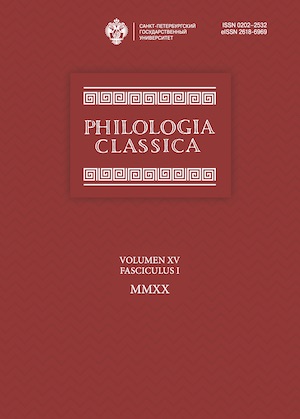The Sea-Leopard and the Oxyrrhynchus Shark (Ael. NA 11, 24)
DOI:
https://doi.org/10.21638/spbu20.2020.103Аннотация
The paper analyzes Ch. 24 of the 11th book of Aelian’s De natura animalium devoted to the so-called sea-leopard (πάρδαλις) and the oxyrrhynchus fish, both living in the Red Sea. Aelian compares the body colour of the sea-leopard to the mountain leopard, i.e. the snow leopard or the ounce (Panthera uncia Schreber, 1775). This comparison clearly demonstrates that the sealeopard is to be identified with the sand tiger shark or the spotted ragged-tooth shark (Carcharias taurus Rafinesque, 1810). This fish usually resides and hunts in the depths of the sea, but also swims to the coast and sometimes attacks the swimming people. The attacks of sand tiger sharks must have taken place in ancient times, so the fish was easily recognizable not only by the Greeks but also by the inhabitants of the Red Sea’s seashore. The Greek ichthyonym ὀξύ(ρ)ρυγχος refers to five different species of fish, but Aelian uses it to denote an oriental kind of shark existing in the Red Sea (NA 11, 24). The oxyrrhynchus shark has an elongated mouth, golden eyes and white eyelids, i.e. nictitating membranes, typical of sharks belonging to the order Carcharhiniformes. Its tail is oblong in shape and its fins are black and white. There are also pale and green parts of its body. On the basis of Aelian’s description it is possible to suggest that the unknown fish should be identified with the bignose shark (Carcharhinus altimus S. Springer, 1950).
Ключевые слова:
animal terminology, etymology, Greek language, leopards, sharks, vocabulary, zoological literature
Скачивания
Библиографические ссылки
Загрузки
Опубликован
Как цитировать
Выпуск
Раздел
Лицензия
Статьи журнала «Philologia Classica» находятся в открытом доступе и распространяются в соответствии с условиями Лицензионного Договора с Санкт-Петербургским государственным университетом, который бесплатно предоставляет авторам неограниченное распространение и самостоятельное архивирование.






